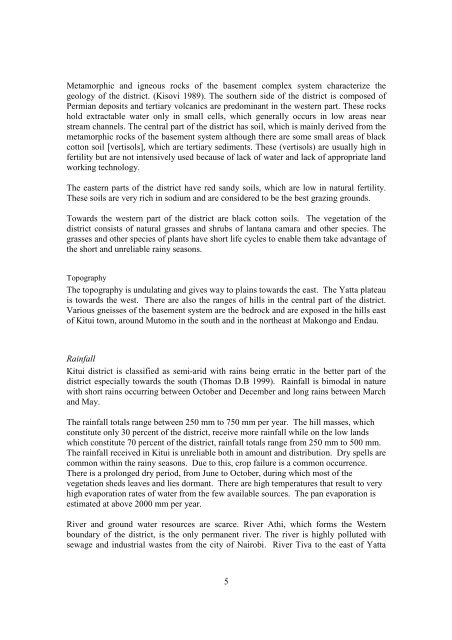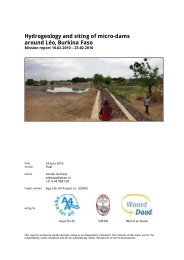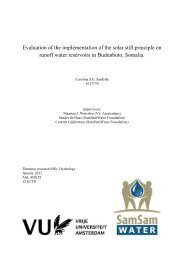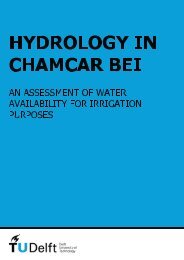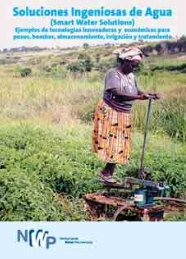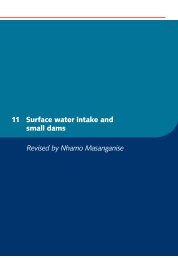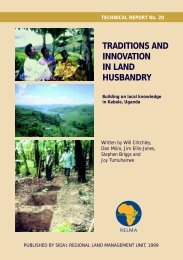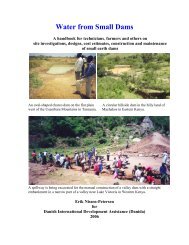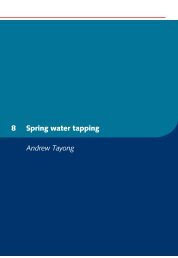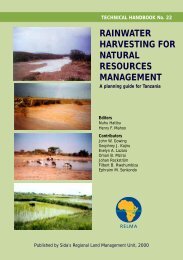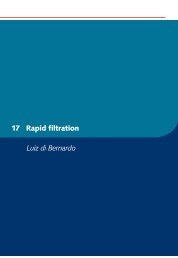KITUI SAND DAMS
Sasol - 2004 - Kitui sand dams Construction and ... - SamSamWater
Sasol - 2004 - Kitui sand dams Construction and ... - SamSamWater
You also want an ePaper? Increase the reach of your titles
YUMPU automatically turns print PDFs into web optimized ePapers that Google loves.
Metamorphic and igneous rocks of the basement complex system characterize thegeology of the district. (Kisovi 1989). The southern side of the district is composed ofPermian deposits and tertiary volcanics are predominant in the western part. These rockshold extractable water only in small cells, which generally occurs in low areas nearstream channels. The central part of the district has soil, which is mainly derived from themetamorphic rocks of the basement system although there are some small areas of blackcotton soil [vertisols], which are tertiary sediments. These (vertisols) are usually high infertility but are not intensively used because of lack of water and lack of appropriate landworking technology.The eastern parts of the district have red sandy soils, which are low in natural fertility.These soils are very rich in sodium and are considered to be the best grazing grounds.Towards the western part of the district are black cotton soils. The vegetation of thedistrict consists of natural grasses and shrubs of lantana camara and other species. Thegrasses and other species of plants have short life cycles to enable them take advantage ofthe short and unreliable rainy seasons.TopographyThe topography is undulating and gives way to plains towards the east. The Yatta plateauis towards the west. There are also the ranges of hills in the central part of the district.Various gneisses of the basement system are the bedrock and are exposed in the hills eastof Kitui town, around Mutomo in the south and in the northeast at Makongo and Endau.RainfallKitui district is classified as semi-arid with rains being erratic in the better part of thedistrict especially towards the south (Thomas D.B 1999). Rainfall is bimodal in naturewith short rains occurring between October and December and long rains between Marchand May.The rainfall totals range between 250 mm to 750 mm per year. The hill masses, whichconstitute only 30 percent of the district, receive more rainfall while on the low landswhich constitute 70 percent of the district, rainfall totals range from 250 mm to 500 mm.The rainfall received in Kitui is unreliable both in amount and distribution. Dry spells arecommon within the rainy seasons. Due to this, crop failure is a common occurrence.There is a prolonged dry period, from June to October, during which most of thevegetation sheds leaves and lies dormant. There are high temperatures that result to veryhigh evaporation rates of water from the few available sources. The pan evaporation isestimated at above 2000 mm per year.River and ground water resources are scarce. River Athi, which forms the Westernboundary of the district, is the only permanent river. The river is highly polluted withsewage and industrial wastes from the city of Nairobi. River Tiva to the east of Yatta5


